Soccer drills
- All balls are next to the goal with the trainer.
- The trainer plays the balls to the players.
- The goal is to score. The player who scores stays in the game, while the player who misses or the goalie who stops the ball is out of the game.
- The team with 1 or more players remaining last wins.
- The player who has been goalkeeping makes sure the balls are returned to the coach until players are finished. After that, those players take over.
- One group starts with goalkeeping, in this case red.
- The trainer plays the ball in and the player from blue runs in and shoots directly at the goal. Don't assume first, then you're off.
- If he hits, he goes goalie and rejoins his group. If he misses, he goes to goal and then collects balls.
- When a player has shot at goal, hit or miss, the next ball from the opponent goes to goalkeeper.
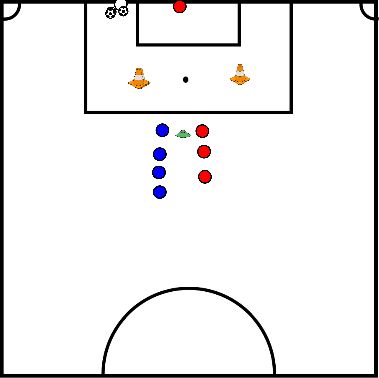
- Pass the ball into the boxes
- Score as many points as possible
- The opposing team's ball may be moved to another box by passing against it with the ball.
- In the youngest groups the distance from the green pawn to the scoring boxes is 5 meters, in the oldest groups it is 8 meters.
- The scoring boxes are 1 meter long and 3 meters wide.
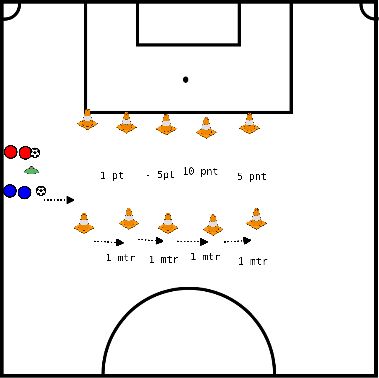
- 2 players face each other
- One is the sender the other the receiver
- The receiver receives and rebounds
- The receiver dribbles sideways several meters without the ball
- The receiver receives the ball again
- The receiver dribbles back without the ball
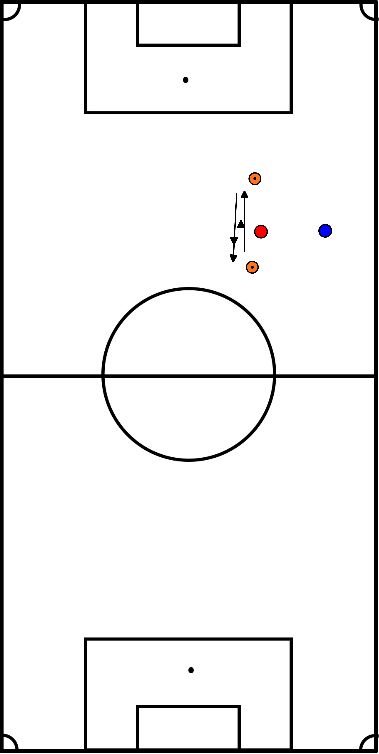
- Standing on one leg with a final goal of 10 seconds sustained with both legs.
- Attention: do not sink into the hip on the standing leg, keep knee slightly bent.
- If not successful, have knee extended or have children find light support from each other.
- Duration: +- 3 minutes.
- The team stands ready in 2 groups behind a pawn.
- They are given an exercise by the trainer and do it 1x. On the way back they run back and close behind.
- 2 players run at the same time. The next one leaves when the pair has passed the first hat.
- Exercises:
1. Jogging
2. Knee-up
3. Heel-to-belly
4. Sideways left
5. Sideways right
6. Arms swing front
7. Arms swing back
8. Jump over caps with 2 feet at the same time
9. Sprint to cap and back
10. Shoulder thrust and sprint
- The players form 3 groups
- 2 players stand by 1 pilon and the other opposite.
- The first of the two players receives the balls and plays the player across from her right in the feet. Then this one sprints to the player and stands by the pilon.
- The other takes the ball and plays the ball to the one opposite.
- This repeats itself.
- Because they work in 3 pairs, they are nice and active.
- Variation:
- There is dribbling with the ball at the foot.
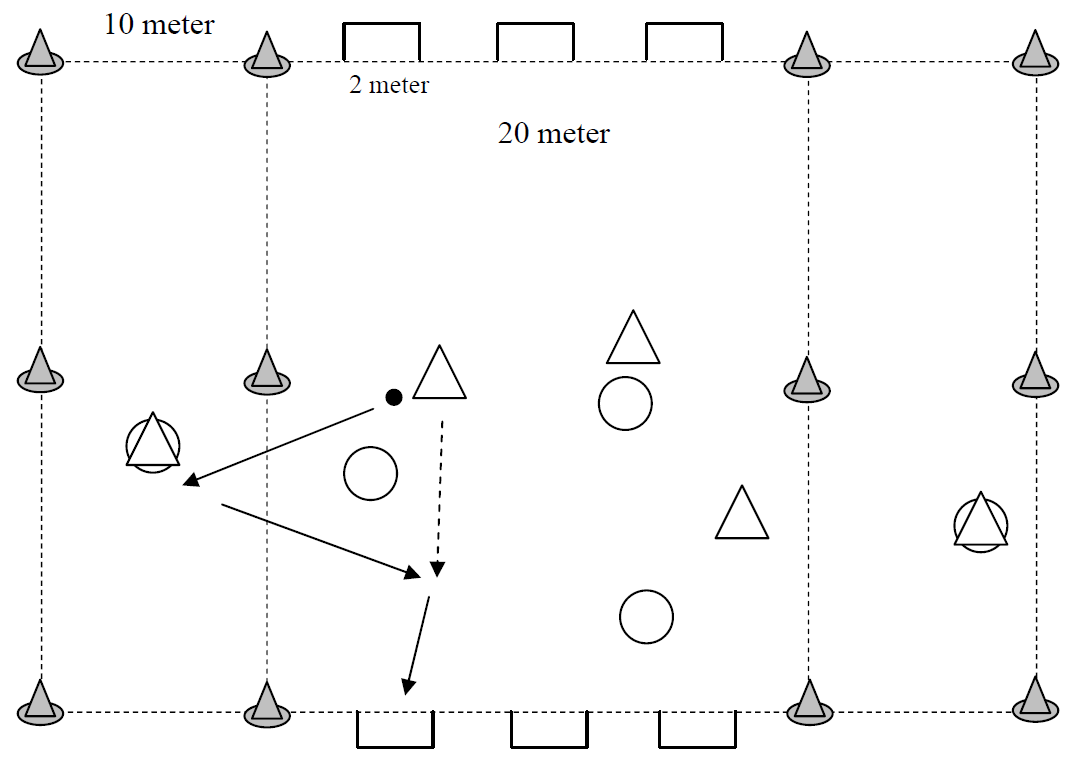
Organisation:
The game is played 3:3 with extra players on the sides, the outfield players. These 2 players are with the ball-carrying team.
Encourage the offside players to play quickly.
The offside players can also dribble with the ball first
After a few minutes, they must either play directly or pass and play
If this is going well, you can also let the two offside players play directly.
The players on the outside are not allowed to score
After 10 minutes or a little less, change the outfielders.
Remarks:
After the offside players have to accept and play, the game runs better. There is
more football in the gamenow
, while in the beginning the outfielders were running a lot with the ball
.
Points of attention:
Try to play directly.
Make sure they use the sides and do not always go for their own success.
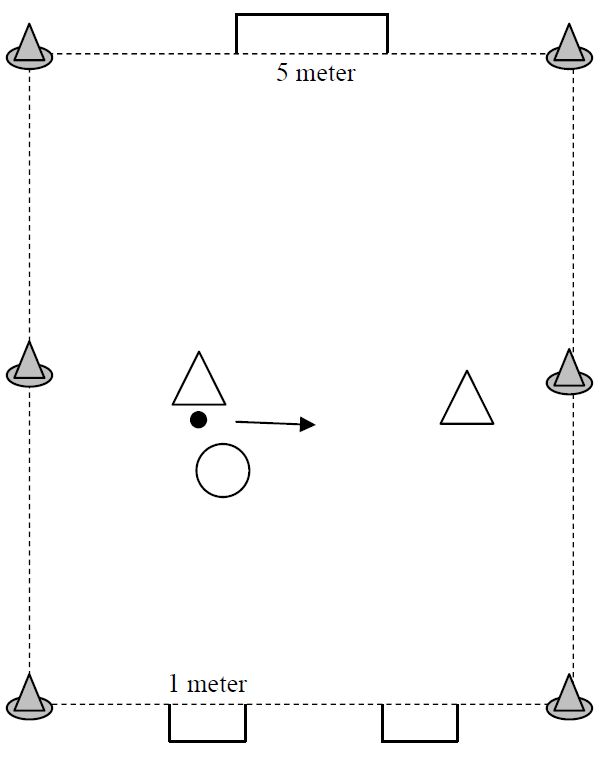
Organization:
The game is played 2 against 1. If there are 2 players left they play 1:1 on a smaller field.
The pair tries to score on the 2 little goals.
After about 8 minutes the players are changed.
If the 2 team has it too easy, you can move the 2 goals closer together.
Remarks:
Because of the many 1:1 duels you can soon see if they are doing well or not so well. Don't
give them instructionsin the first
game. Give them the chance to improve themselves.
Points of attention:
Prevent the opponent from shooting at goal.
Position yourself in such a way that it is difficult for your opponent to pass to his/her team-mate
Organisation:
On 2 fields 3:3, 4:4 or 4:3 is played.
You can score with a dribble through one of the two little goals.
First try to encourage them to make passing moves.
If that is going well, you can also try to make sure they make the right choice between passing and playing over.
After about 10 minutes a different opponent.
Remarks:
When changing opponents, you can indicate which nice passing actions you have seen.
Points of attention:
Do not use the passing move too far or too close to the opponent.
The body must move with the passing move in order for it to be successful.
Organisation:
On 2 or 3 fields play 4:4, 3:3 or 2:2.
Encourage shooting from distance.
Points of attention:
Technical execution of the kick with the inside of the foot
: Stand leg; point in the direction of play; bent at the hip, knee and ankle.
Playing leg; turned outward; knee and ankle bent.
Playing foot; perpendicular to the direction of play; sole of the foot parallel to the ground; toes raised;
no weak ankleon the
kick.
A controlled swinging movement.
Technical execution of the kick with the inside of the instep
:Stand leg; 2 to 3 foot widths next to the ball; bent at the knee.
Tackle; on the inside of the spot where the laces begin.
Approach from an angle of approximately 45º.
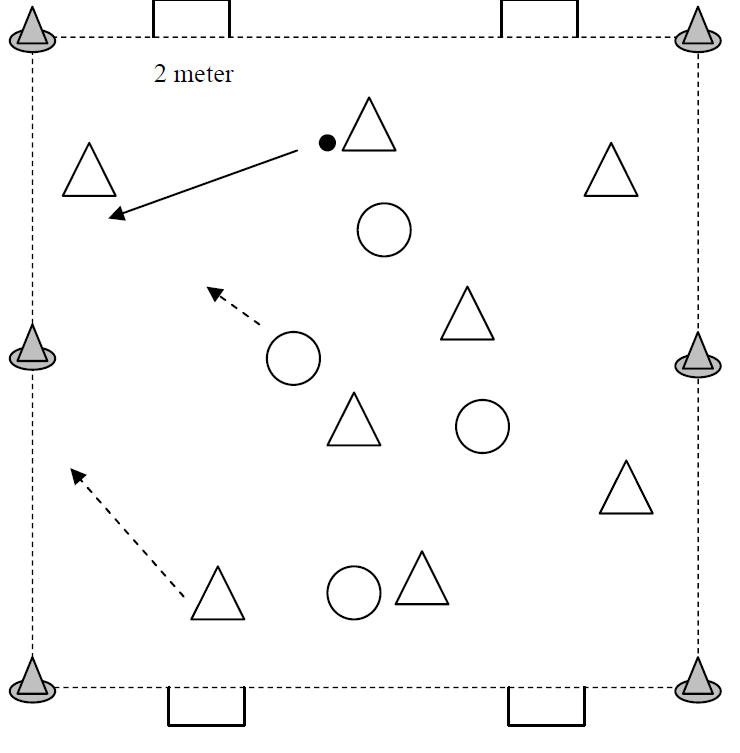
Organisation:
The game will be played 8:4.
6:3, 7:3, 7:4, 9:4 or 9:5 is also possible.
With more or less players the size has to be adjusted.
The 8-team may score after 5 replays.
The 4-player team may always try to score.
When the ball is intercepted by the foursome, when it goes out or after a goal has been scored, a new count must be made.
count again.
After, in total, 5 goals or after 10 minutes substitute.
To make it easier or more difficult, the number of replays can be changed.
Points of attention:
Use the left and right foot.
If possible, keep the ball low
.
Correct ball speed.
Play directly.
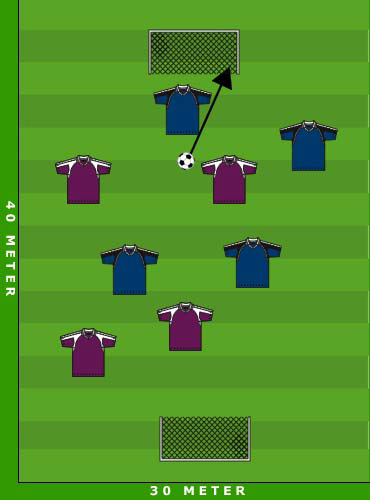
Field setup:
2 large goals
How the game progresses:
This can be done in 4 v 4 or 3 v 3 or even 2 v 2 formation. Players must always pass 1 player before the ball is passed to the teammate.
Rules/tips:
- If there is scored or shot over the line the ball must be given to the other team.
- A goal may not be scored from the team's own half.
- One player must always be passed before a pass can be made. If this is not done, it is a free ball for the other team.







